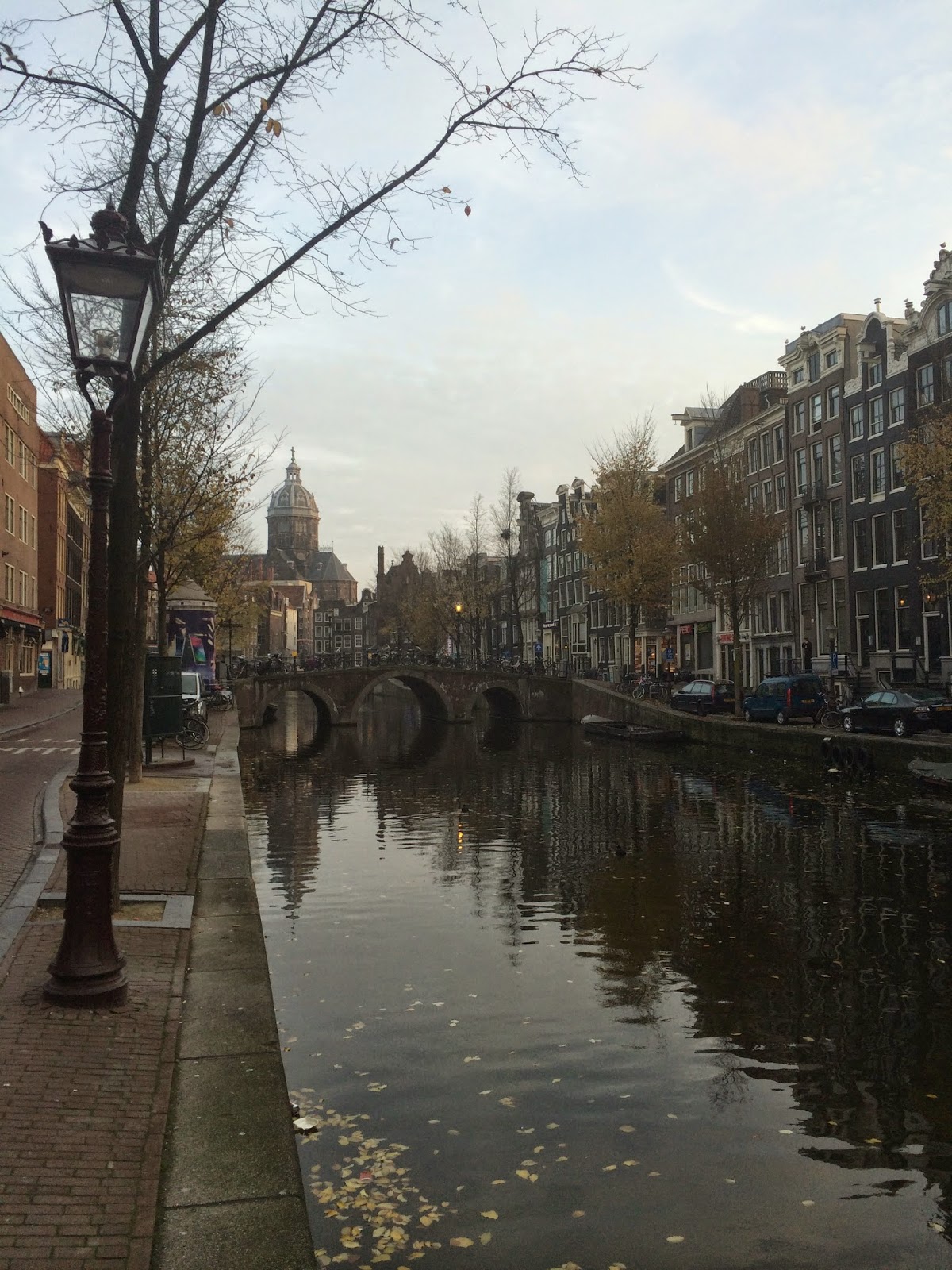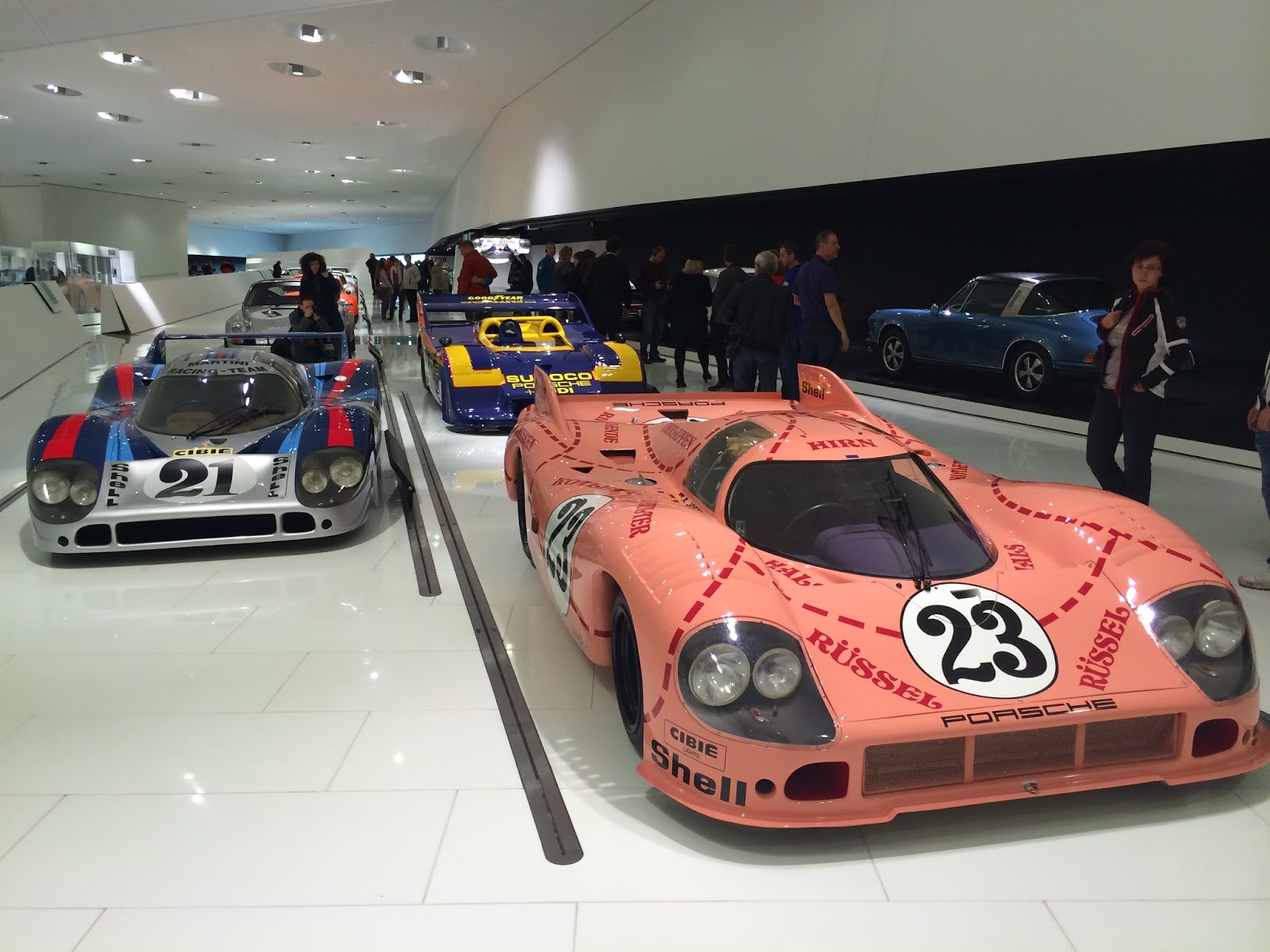I arrived in
Amsterdam well after dark. In fact it was so dark I couldn’t figure which way
out of the station led me to the city. After a strangely confusing few minutes
I found my way out in to what was actually a street packed with people. I made
my way through the boisterous crowd down the street with tourist shops still
open and French fry shacks serving long lines of cold customers. After a few
turns and equally few minutes I arrived at my hostel.
I again not planned much to see in the city so I spent some
time on the computer mapping out what I was going to see. They also had little
cards, the size of a credit card that hung in the halls. There were about fifty
different cards and each featured a certain attraction in the city, it’s
location, hours and often an incentive to visit, a few euros off, a free gift,
free drink, or something like that. From this selection I picked eight or so
cards featuring places that struck my fancy. For a late dinner I went to an
all-you-can-eat sushi place that I had seen on my way in. Afterward went for a
late night walk hoping to avoid being invited to go out and party by any of my
eleven temporary roommates.

Amsterdam is a beautiful city; it was spared the devastating
bombings that so many European cities were subjected to. Thus thankfully many
of the older buildings remain intact and quite beautiful. So in the morning I
began my journey through the city first just walking along the main street of
the inner city which was lined mostly with shops and filled with tourists
enjoying the crisp morning hum. Amsterdam has a rich used book culture. That is
they have many shops all over the city that sell used books and also many
makeshift street side vendors who set their literature out for the day. I found
a particularly large used book market that had set up for the morning so I
spent some time wandering though searching for books in English which there
were plenty of.

After this I made my way to the house of Rembrandt which was
about a fifteen minute walk. Once I got there I found it was rather pricey to
see his house, and I had been a bit disappointed by the Goethe house museum in
Frankfurt so I chose to save my euros for another adventure. Though it was
still very worth the walk just to see the house and a bit of the exhibit. I
made my way back through the city and got on a tram to go to the Resistance
Museum, which is a small museum dedicated to the occupation of the Netherlands,
Holland and even Amsterdam in particular. I was a very interesting museum. It
was small compared to others but I took my time seeing it and absorbing the
history.

Next I was off to the Heineken Experience. The old factory
now sits just a few minutes outside of the city center, being originally built
on the outskirts of town it has long been enveloped by the expanding city. The
Heineken Experience is a tour of the first Heineken factory and of course comes
with insight into the companies history, the brewing of beer and even comes
with a glass of Heineken at the end of the tour. It was interesting to learn
out the companies history and to learn about the brewing process but it was
really quite tourist-y ,
there was not
enough information and too much self-promotion.
But I had a wonderful glass of Heineken at the end of the tour.
It was getting dark and even chillier than it had been
earlier in the day so I chose to take a tram back to the main station via a
different route than I had taken earlier in the day to get my last bit of sight
seeing for the day. The inner city was still hopping and it really was still
quite early, so I moved to check off another box on my list of things to
see. Cheese. Cheese is also a culture
especially potent(cheese joke) in Amsterdam.
There are many old cheese shops filled with countless wheels of cheese.
I had one of my little cards that could get me a discount at one that was
conveniently located to where I was, so I chose to stop in and check out the
Amsterdam cheese seen. It did not let me down. There was a very friendly
employee who was already helping some ladies in the back of the store. He
invited me back and pulled about nearly a dozen types of cheese for me to try.
For about fifteen minutes I tasted and retasted some wonderful cheeses. I felt
bad for just standing and trying the cheeses and so I eventually came to a
conclusion on my few favorite.
After enjoying the cheese seen I was on to the fry seen.
French fries, or pom fritts, they don’t much care for the former title in
Brussels or the Netherlands. A few shops down from the cheese place was the top
rated fry shack in Amsterdam. So I waited in line for a few minutes, got a big
funnel of fries and some mayonnaise, because that is how it is done over there,
and don’t trash it til you’ve tried it. With my fries keeping me warmed I
hopped back on the tram and rode out to another square a few minutes ride away
and enjoyed walking around. An ice-skating ring was the main attraction, which
was surrounded on three sides by outside seating with heat lamps where couples
and parties sat enjoying a late dinner or some coffee. On the fourth side were
Christmas huts selling all assortments of sweets and on the go edibles. After
enjoying the seen I was off to bed.

The next day I took a walking tour throughout the city, I
saw the Royal Palace, the thinnest building in Amsterdam, the many canals, the
old entrances to the city and other sites. The most interesting part of the
tour was enclosed garden surrounded by small homes. This cloister-like
community was a place where catholic women lived in relative peace for two hundred
years while Catholicism was outlawed by protestant Amsterdam. There was a tiny
chapel that was built into one of these buildings where Catholics worshiped in
secret for these two centuries. The most peculiar and maybe divisive point of
this place, one of the leaders of these Catholic women, Cornelia Arents, when
she was to die demanded that she not be buried in the protestant graveyard, as
was common. She said she would rather be buried in the sewer than in the
graveyard of heretics. And so it was. She was buried in the gutters, and now
there is a tiny square plate in the ground in one of the walk ways where she
was buried.

After the tour had completed I ran over to one of the used
bookstores that we had been through on the tour. During the tour I had spotted
a copy of G.K. Chesterton’s “Father Brown Mysteries”. So when I had returned
and found the book I purchased for the bargain price of four Euros. After a bit
more wandering I headed to a Church for Saturday evening Mass. I was flying
back home Sunday morning so I had to go in the evening. It was the only Church
that I had found that had Mass in the evening, and as I always am, I was a bit
afraid of what I may find. But instead I was greeted by a priest in full
cassock and a gorgeous Church, so magnificent and unexpected I only wondered
how it could have survived both the protestant revolution and the iconoclasm of
the 70s, a real miracle. And the Mass, kept character of this magnificent
place. It was the novus ordo of dreams for Catholics nostalgic of earlier
liturgical times. The canon said quietly and in Latin, ad orientem, the music
of the liturgy, Gregorian Chant, and quiet and prayerful laity all in a
beautiful Church. A wonderful and surprising gift to welcome the liturgical New
Year, and a sublime way to end a week of travel. I
even got to go to confession, how lovely.

After Mass I went back to the hostel to pack my things for
an early flight back to Riva.



























